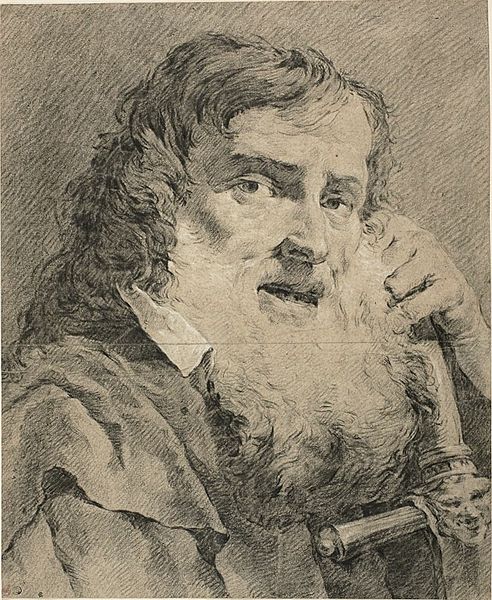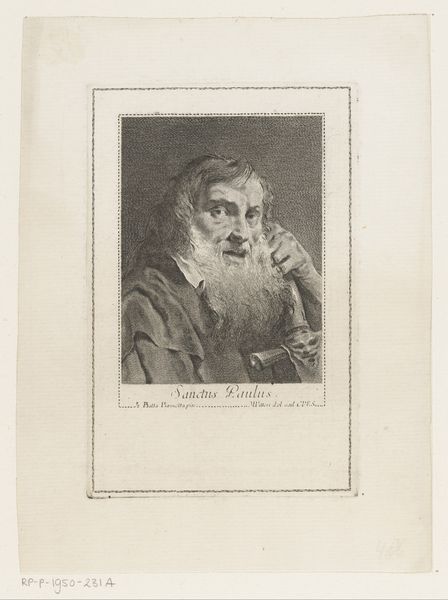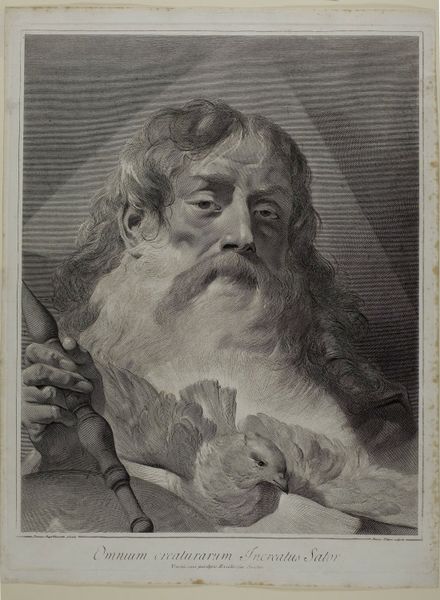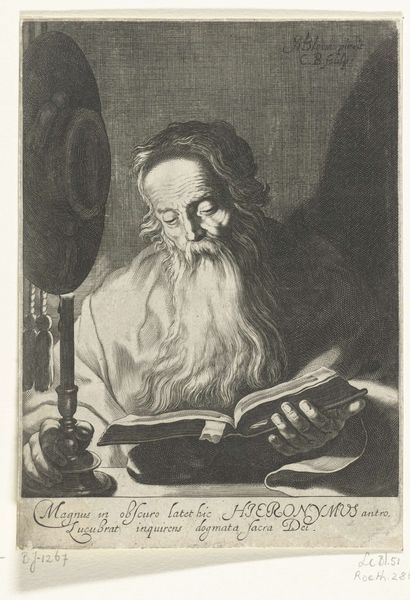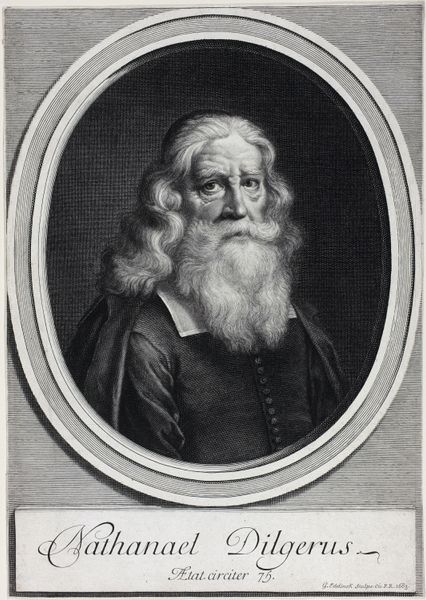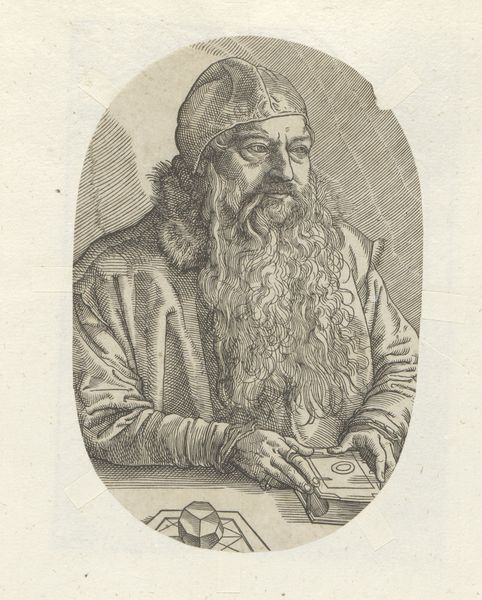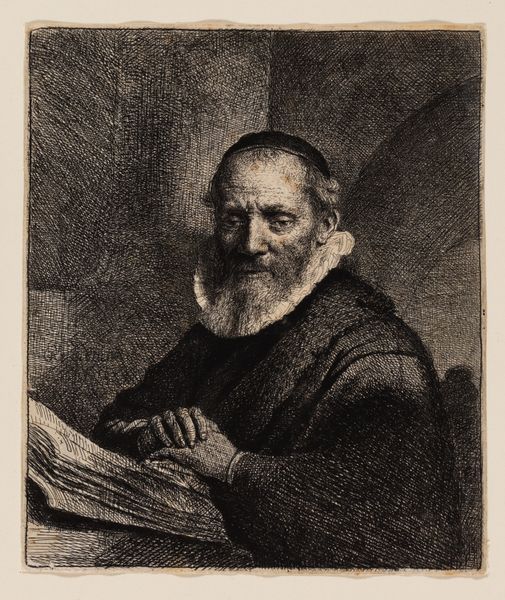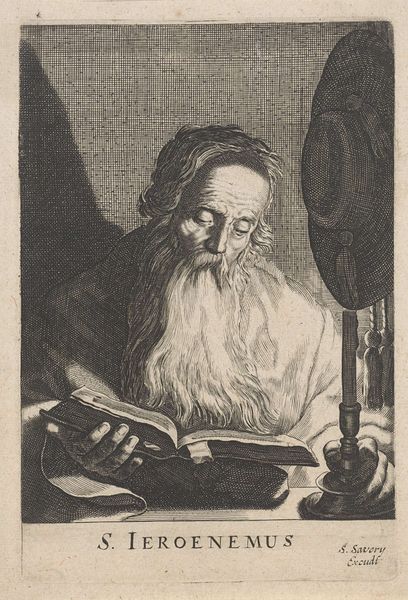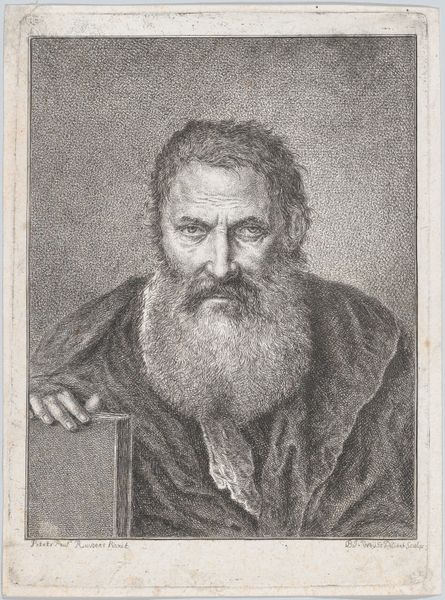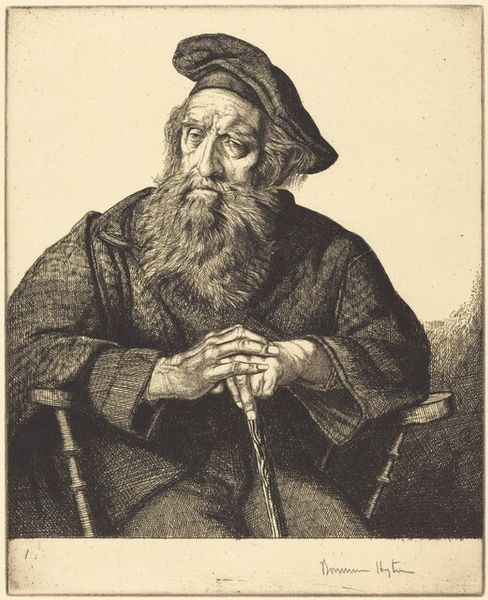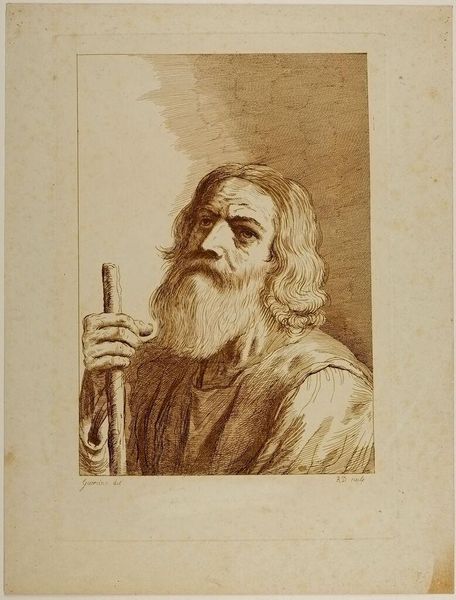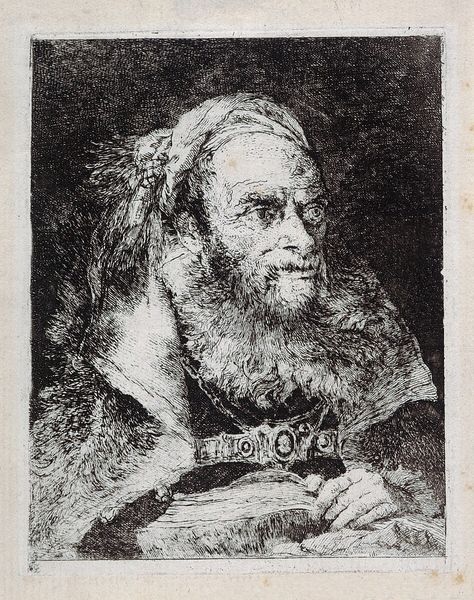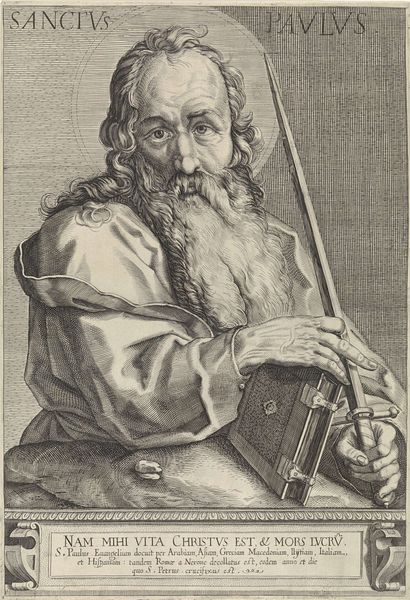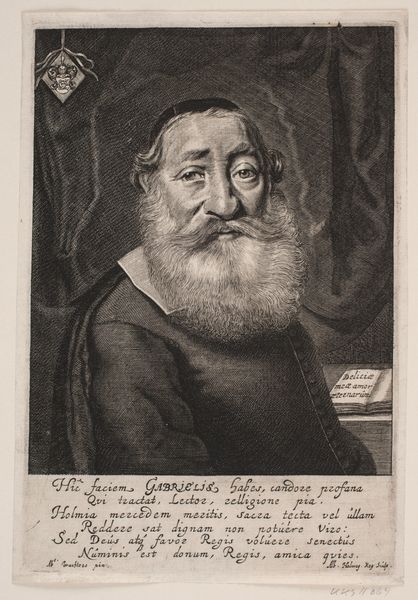
God the Father and Eleven of the Twelve Apostles n.d.
0:00
0:00
drawing, print, paper, engraving
#
portrait
#
drawing
#
baroque
# print
#
figuration
#
paper
#
line
#
portrait drawing
#
history-painting
#
academic-art
#
italy
#
engraving
#
portrait art
Copyright: Public Domain
Editor: So, here we have “God the Father and Eleven of the Twelve Apostles” by Giovanni Marco Pitteri. It's an engraving. It feels quite intense, with all that intricate line work creating a very dramatic portrait. What can you tell me about it? Curator: Well, it’s crucial to understand that prints like this circulated widely. They weren’t just aesthetic objects; they actively shaped religious and historical narratives for a broad public. Consider where such an image might have been displayed and who might have encountered it. Editor: Presumably, churches, or even people's homes? So, how would this image function differently in a wealthy patron’s collection versus a less affluent individual’s space? Curator: Exactly. A wealthy collector might see it as an artistic display of skill, perhaps part of a larger collection, emphasizing their connoisseurship and status. For someone of lesser means, a print like this could serve as a more direct devotional tool, almost an icon for personal reflection. Its availability through printmaking democratized access to powerful imagery, shifting how individuals engaged with religious figures. Editor: That's a great point. The image almost becomes a shared cultural artifact with different levels of personal significance. Did Pitteri create other images like this? Did his images carry particular meaning? Curator: Pitteri was known for his skill as a reproductive engraver; meaning he made prints based on other artist’s paintings. The prevalence of this kind of work underscores the importance of printmaking as a vital component of art dissemination. He didn't originate these compositions. But, because of his talent and ability to reproduce beautiful paintings as prints, he had the opportunity to widely disperse specific political or religious visual messages that could bolster certain values within society. This also begs us to consider the artist behind the painting that Pitteri engraved; because the agenda behind commissioning the painting would also be carried through his work. Editor: So, understanding the role of printmaking really helps us see this image as more than just a portrait, but as part of a larger system of cultural exchange. I never thought about it like that before. Curator: Precisely. Looking at art through the lens of its social and historical context can reveal hidden layers of meaning.
Comments
No comments
Be the first to comment and join the conversation on the ultimate creative platform.
